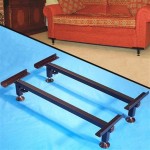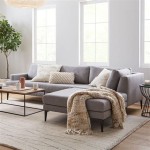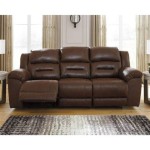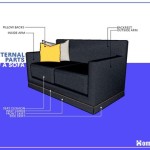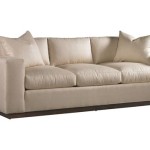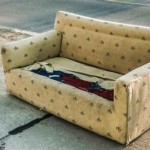How To Choose Sofa Legs
Sofa legs play a crucial role in both the aesthetics and functionality of a sofa. They contribute significantly to the overall style and can drastically alter a sofa's appearance. Selecting the right legs involves considering various factors, from the sofa's existing design to the desired height and the room's overall aesthetic.
One of the primary considerations when choosing sofa legs is the existing sofa style. A modern sofa might benefit from sleek, metallic legs, while a traditional sofa might look best with ornate, wooden legs. Matching the leg style to the sofa's existing design ensures a cohesive and harmonious look. Examining the sofa's lines, materials, and overall aesthetic helps determine the appropriate leg style.
Height is another critical factor. Sofa leg height impacts both comfort and practicality. Taller legs create more space underneath the sofa, making cleaning easier and allowing for more airflow. They also contribute to a lighter, more airy feel. Shorter legs, on the other hand, offer a more grounded, stable feel and can be a better choice for households with children or pets.
The material of the sofa legs is an essential element to consider. Wood, metal, and plastic are common choices, each offering distinct advantages and disadvantages. Wooden legs offer a classic, warm aesthetic and can be carved into intricate designs. They are, however, more susceptible to scratches and wear. Metal legs provide a modern, sleek look and are highly durable. Plastic legs are a cost-effective option and are resistant to moisture, but may not be as aesthetically pleasing as wood or metal.
Weight capacity is a crucial factor that often gets overlooked. Sofa legs need to be strong enough to support the weight of the sofa and its occupants. Checking the weight capacity of the legs before purchasing is vital to ensure the sofa's stability and longevity. Choosing legs with a higher weight capacity than the sofa's estimated weight ensures a safe and secure seating arrangement.
The room's existing décor should also influence the choice of sofa legs. The legs should complement the overall style of the room, contributing to a cohesive and visually appealing space. Consider the existing furniture, color palettes, and decorative elements when selecting sofa legs to ensure they integrate seamlessly into the room's design.
Color plays a significant role in the overall aesthetic. The color of the sofa legs should complement both the sofa and the surrounding décor. Neutral colors like black, brown, and silver are versatile choices that work well with various sofa styles and room décor. Alternatively, a bold color can be used to make a statement or add a pop of color to a neutral space. The finish of the legs, whether matte, glossy, or brushed, also contributes to the overall look.
Ease of installation is a practical consideration, especially for those who prefer DIY projects. Some sofa legs require simple screwing mechanisms, while others may involve more complex installation procedures. Checking the installation instructions beforehand helps determine the level of difficulty and ensures a smooth installation process.
Budget is another factor that influences the choice of sofa legs. Prices can vary significantly depending on the material, design, and brand. Setting a budget beforehand helps narrow down the options and ensures a cost-effective purchase. While high-quality legs may come at a higher price, they often offer better durability and longevity.
Maintenance requirements should also be considered. Different materials require different levels of maintenance. Wooden legs may need regular polishing or waxing to maintain their appearance, while metal legs may require occasional cleaning to prevent rust or tarnish. Considering the maintenance requirements helps ensure the legs maintain their appearance and functionality over time.
Availability is a practical aspect that can sometimes be a limiting factor. Certain styles, materials, or sizes may not be readily available in all locations or may require special ordering. Checking the availability of the desired sofa legs beforehand helps avoid potential delays or disappointments.
Considering reviews and recommendations can be helpful when making a decision. Reading reviews from other customers can provide valuable insights into the quality, durability, and ease of installation of different sofa legs. Seeking recommendations from furniture experts or interior designers can also offer valuable guidance in selecting the right legs for a specific sofa and room aesthetic.
Measuring the existing sofa legs or the mounting plates is essential to ensure compatibility. Accurate measurements help avoid purchasing legs that are the wrong size or shape. Using a measuring tape to determine the required height, width, and mounting configuration is crucial for a successful installation.
Thinking about the long-term implications of the chosen sofa legs is a wise approach. Consider factors like durability, ease of cleaning, and potential wear and tear. Choosing legs made from high-quality materials and with a robust construction ensures they will withstand regular use and maintain their appearance over time.

Types Of Sofa Legs The Ultimate Guide 2024 Maxave

Types Of Sofa Legs The Ultimate Guide 2024 Maxave

Change The Style Of Your Sofa For Less Than 30 Anderson Grant

Couch Confidential 10 Essential Steps To Choosing Your Next Sofa The Denver Post

Types Of Sofa Legs The Ultimate Guide 2024 Maxave

Change The Style Of Your Sofa For Less Than 30 Anderson Grant

20 Best Sofas For Small Living Rooms Plus Expert Advice

How To Choose The Perfect Sofa For Your Living Space

How To Choose The Right Sofa For Your Home Elementi Interiors Decoration Interior Design Bangkok

How To Attach Sofa Legs A Step By Living Spaces

